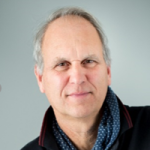Keynote Speakers
C. Canudas de Wit
Director of research at CNRS, CNRS/GIPSA-Lab, Grenoble, France.
Talk title: EVs and Renewable Energy: Paving the Way for Greener Electromobility Networks.
Abstract:
The simultaneous expansion of electric vehicles (EVs) and intermittent renewable energy sources holds the potential to accelerate the decarbonization of highly emissions-intensive sectors. However, these developments also pose challenges to the stability of power systems, which could impede their widespread adoption. Nevertheless, electric vehicles present a significant opportunity to enhance flexibility, enabling better integration of renewable energy variations and optimization of energy markets. To address these challenges, there is a need to design new models that incorporate both electric vehicle traffic flows and battery charge dynamics. These models represent a crucial step towards utilizing e-flexibility, a concept aimed at predicting the spatial and temporal evolution of EVs’ state of charge in relation to the electrical grid and associated electricity market operations. The presentation introduces a graph-based approach to model the mobility of electric vehicles and the evolution of their state of charge in large-scale urban traffic networks. This model combines the vehicles’ mobility, described by dynamic equations over a graph that captures origin-destination movements, with the energy consumption associated with their mobility patterns. The model also incorporates power inputs from charging stations. We will showcase the operation of these models using our numerical twin (eMob-Twin) on the open-to-public platform emob-twin.inrialpes.fr. This model can be extended to account for driver behavior in determining when and where to charge, considering factors such as current state of charge, distance to charging stations, and charging costs. Moreover, it can be used to identify optimal locations for charging stations, maximizing convenience for EV users and profitability for charging station owners. We will also introduce a simplified (averaged) version of the model, which serves as a foundation for optimizing charging station locations while reducing computational complexity. Lastly, we propose an innovative approach that utilizes aggregated EVs for grid-balancing services in the auxiliary market. This is donne by an optimization framework which establishes pricing strategies to maximize profits for aggregators and CSOs while minimizing charging costs for EV users. Our findings demonstrate the effectiveness of this strategy in realistic simulations, integrating EV mobility and the Electricity FCR market.

Raja Sengupta
Professor of CEE: Systems at UC Berkeley, California, United States.
Talk title: Advanced Air Mobility: A New Play for an Old Market.
Abstract:
The closing decades of the 19th century and the opening ones of the 20th saw the birth of the automotive and aviation industries. While both came to be storied 20th century leviathans with names like Daimler, Ford, Volkswagen, Boeing, or Airbus, one went into the urban mobility market and the other the inter-urban one. However the scales of urban mobility are significantly larger than those of inter-urban mobility. Boeing reached annual revenues of $100 billion and nearly 800 aircraft deliveries. However Volkswagen’s revenues and deliveries can exceed $250 billion and 8 million vehicles. Buoyed by technological advances in battery-electric, hybrid-electric, distributed-electric propulsion, and a few billion in investment, the 21st century aviation industry is making a play to even the scales by entering the much larger shorter distance travel market. We will place these technologies side by side with our motorway and urban traffic systems and explore the network designs, infrastructure quantities, and fleet sizes these technology companies will need to produce like our motorways and urban traffic systems.

Dotan Emanuel
TLM Green Light, Google Research.
Talk title: Mitigating climate change in cities by traffic signals.
Abstract: to be published.

Antonella Ferrara
Professor at University of Pavia.
Talk title: Heterogeneity on the Road: A Multi-Scale Traffic Modelling and Control Perspective
Abstract:
The impact of successful research in road traffic control spans across various domains, including the scientific, technological, social, and economic spheres. Its significance is profound, as it directly influences safety, quality of life, climate neutrality, energy resource utilization, and transportation costs. However, the development of effective methods and algorithms for road traffic management encounters notable methodological challenges. Traditionally, traffic control strategies have relied on infrastructure-based approaches. Yet, the rapid advancements in automotive technologies, traffic sensors, data processing, and communication have created unprecedented opportunities for the exploitation of connected and automated vehicles (CAVs), offering innovative solutions to longstanding traffic control challenges. This talk will address these challenges and advancements, beginning with an overview of classical traffic control concepts. It will then delve into emerging research trends that exploit traffic heterogeneity, as well as the multi-scale nature of road traffic dynamics, from the microscopic scale of the individual CAV to the macroscopic scale of road traffic flow. Furthermore, it will illustrate how these aspects can efficiently coexist within advanced vehicular traffic control systems that optimize the traffic flow, enhance safety, and mitigate the environmental impact.
